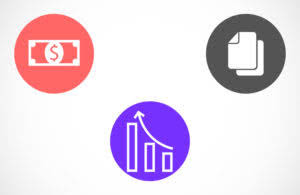
Advisors say one of the quickest ways to measure a dividend’s safety is to check its payout ratio, or the portion of its net income that goes toward dividend payments. If a company pays out 100% or more of its income, the dividend could be in trouble. Like a stock’s dividend yield, the company’s payout ratio will be listed on financial or online broker websites. Dividend payments have a multifaceted impact on a company’s financial statements, influencing various aspects of its financial health and performance metrics. When a company declares and pays dividends, it directly affects its retained earnings, reducing the amount of profit that is reinvested back into the business. A company’s dividend policy is a strategic decision that reflects its financial health, growth prospects, and management’s confidence in future earnings.
Dividend Payments
- As mentioned, dividend payments and stock price appreciation make up a stock’s total return.
- Dividends are usually paid quarterly, but unlike dividends on common stock, dividends on preferred stock are generally fixed.
- There are three different types of dividend policies that companies can adopt, including constant, residual, and stable dividend policies.
- Dividend announcements usually cause a company’s stock price to move up or down in proportion with the dividend.
- This means that the calculated dividends will remain consistent over that time.
S&P 500 companies that have a long history of paying increased dividends are called Dividend Aristocrats. Preferred stock is a type of stock that functions less like a stock and more like a bond. Dividends are usually paid quarterly, but unlike dividends on common stock, dividends on preferred stock are generally fixed.
Are dividends free money?

Some companies may decide to retain their earnings to re-invest for growth opportunities instead. Savings account dividends refer to the interest earnings that a financial institution pays to the account holder for the money deposited and held in a savings account. https://www.facebook.com/BooksTimeInc/ When you deposit money into a savings account, you are essentially lending it to the financial institution.
What is your current financial priority?
A dividend yield is a financial ratio that https://www.bookstime.com/ shows how much a company pays out in dividends relative to its share price. The dividend yield can be a valuable indicator to compare stocks that trade for different dollar amounts and with varying dividend payments. In some jurisdictions, tax credits or deductions are available to mitigate the impact of double taxation. For example, in Canada, the dividend tax credit allows individuals to reduce their tax liability on dividends received from Canadian corporations. This credit is designed to account for the corporate taxes already paid on the distributed profits, thereby reducing the overall tax burden on shareholders. Such mechanisms can significantly influence investor behavior and the attractiveness of dividend-paying stocks.
- As a result, both cash and retained earnings are reduced by $250,000 leaving $750,000 remaining in retained earnings.
- Companies with stable and predictable earnings often adopt a consistent dividend policy, providing regular payouts to attract income-focused investors.
- Ask your investment advisor or financial planner what their current strategy is this week–you might be surprised by the response.
- There may be some special considerations at play, so if you have a lot of dividends, it may be beneficial to consult with a financial professional to get a sense of your overall tax liabilities.
- Dividend payout ratio is the proportion of a company’s earnings that is used to pay dividends to investors.
- This is because the interest is usually calculated as a percentage of the account balance.
Benefits of Earning Savings Account Dividends
- SoFi doesn’t charge commissions, but other fees apply (full fee disclosure here).
- For shareholders, DRIPs provide a convenient way to increase their investment without incurring brokerage fees, and they benefit from the compounding effect of reinvesting dividends.
- This means that your account balance will increase by the amount of dividends earned, contributing to the growth of your savings over time.
- If a company pays stock dividends, the dividends reduce the company’s retained earnings and increase the common stock account.
- Dividends payable are nearly always classified as a short-term liability, since the intention of the board of directors is to pay the dividends within one year.
- This liability is recorded as “Dividends Payable” and represents the company’s obligation to pay its shareholders.
- However, many may not be aware that savings accounts can earn dividends, which can provide an additional source of income.
A dividend is a portion of a company’s profits that is paid to its shareholders, usually quarterly. Ally Invest®’s self-directed cash account has no minimum balance requirement, making it an attractive option for those dipping their toes into the market for the what kind of account is dividends first time. Investment options for dividend stocks are as varied as they are for any other stock — you can choose shares of an individual company, mutual funds or ETFs. Financial websites or online brokers will report a company’s dividend yield, which is a measure of the company’s annual dividend divided by the stock price on a certain date. The investing information provided on this page is for educational purposes only. NerdWallet, Inc. does not offer advisory or brokerage services, nor does it recommend or advise investors to buy or sell particular stocks, securities or other investments.

It’s easy to get started when you open an investment account with SoFi Invest. You can invest in stocks, exchange-traded funds (ETFs), mutual funds, alternative funds, and more. SoFi doesn’t charge commissions, but other fees apply (full fee disclosure here). While this formula helps compare dividend yields, there may be other factors to consider when deciding on the suitable investment. There are many reasons a company could have a high or low dividend yield, and some insight into dividend yields is necessary for further analysis. On the date that the board of directors decides to pay a dividend, it will determine the amount to pay and the date on which payment will be made.
When are Dividends paid to shareholders?

This argument has not persuaded the many investors who consider dividends to be an attractive investment incentive. The stock might trade at $63 one business day before the ex-dividend date. Any item that impacts net income (or net loss) will impact the retained earnings. Such items include sales revenue, cost of goods sold (COGS), depreciation, and necessary operating expenses.

Investors can take advantage of the favorable tax treatments of qualified dividends when paying taxes on stocks. Occasionally, companies will pay out dividends at random times, possibly due to a windfall in cash from a business unit sale. In contrast, an established business might not need to retain profits and will distribute them as a dividend each year. The investors in such businesses are looking for a steady growth in the dividends. If a company’s board of directors decides to issue an annual 5% dividend per share, and the company’s shares are worth $100, the dividend is $5.